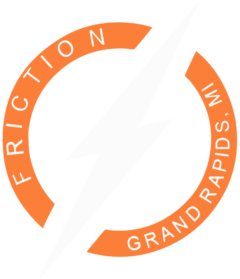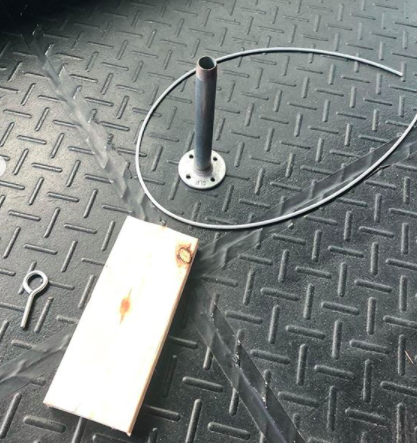I once compared grip strength to cardiovascular endurance.
When you train it, it’s an aspect of training you can always push for more. When you don’t have it, it’ll be really obvious.
Grip strength is a very simple concept: above and below.
Hang from things.
Hold on to things.
The fun and complexity comes from what you hang from, and what you hold on to.
In the post tagged below, I demonstrate how to build a Block Grip Trainer.
Since building it, I’ve made two new attachments. An identical block bolted to the original one, to double its thickness. The second new attachment was a cone that tapered off into your palm, think of it like holding a cone upside down.
With the cone attachment, the thinnest part will be at the strongest part of the wrist (the meaty part of the palm).
All in all, cost of goods was $0. We had all of this equipment laying around.
For you, if you’re looking to make this for yourself, total cost of goods would be approximately $15 (depending what tools you have already).
You can play with this implement and learn how to properly pull from the ground at Friction Grand Rapids.
All in all, the purpose of building this piece of equipment was to not only improve my grip with this specific tool, but in other areas of lifting.
In olympic weightlifting, my pull will be even stronger because I can hook grip the bar more effectively. In powerlifting, my deadlift should improve slightly because I can generate more tension through the lower part of my arm, therefore creating more power.
And, I can bring all my groceries in at once. I won’t even need a cart to take my bags out of the store to my truck.
As far as building grip from below, you can hold on to anything really: kettlebells, dumbells, barbells, full grocery bags, literally anything you can get your hands on. Then, just hold it. Start with 30 seconds, and then progress longer and longer.
From above, you can hang from: a pullup bar, a pair of gymnastics rings, a swingset, a (well secured) door frame, (again, well secured) rafters. Same idea, start with 30 seconds, and then progress.
Physically speaking, the shoulder joint should be “active”. When hanging, slightly pull your shoulder blades down and together. When holding onto things, pull your shoulder blades back and up (just a little). In time, your shoulder girdle will thank you. Your upper traps will become stronger and can better support your shoulders and neck. Your shoulder joints will be distracted and decompressed when hanging from an apparatus.
A strong upper back, and mobile shoulder joints are the key to shoulder health. Proper range of motion with proper stability to support it. Grip training will facilitate all of that.
View this post on InstagramA post shared by Mike Carr (@mikeytruck) on
A strong grip is to your overall strength, what a good set of lungs is, to your running.


